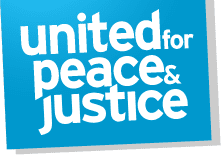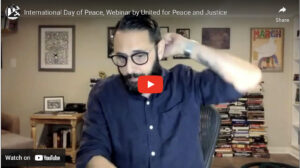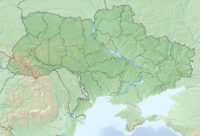 UFPJ’s oldest working group, the Nuclear Disarmament /Redefining Security Working Group (UFPJ-Disarm), was established following the first UFPJ National Assembly in 2003, with the explicit purpose of locating the often-misunderstood issue of nuclear weapons in the broader context of U.S. militarism and empire. We also seek to raise awareness about the grave environmental dangers and exorbitant financial costs of the entire nuclear chain, and the inextricable link between nuclear energy and nuclear weapons.
UFPJ’s oldest working group, the Nuclear Disarmament /Redefining Security Working Group (UFPJ-Disarm), was established following the first UFPJ National Assembly in 2003, with the explicit purpose of locating the often-misunderstood issue of nuclear weapons in the broader context of U.S. militarism and empire. We also seek to raise awareness about the grave environmental dangers and exorbitant financial costs of the entire nuclear chain, and the inextricable link between nuclear energy and nuclear weapons.
Nuclear dangers are growing. President Obama’s nuclear disarmament rhetoric not withstanding, as confirmed by his administration’s April 2010 Nuclear Posture Review, the United States continues to rely on nuclear weapons as the cornerstone of its national security policy, and will not rule out the first use of nuclear weapons. As the price for Senate ratification of the new START treaty, President Obama pledged $85 billion “to sustain and modernize the nuclear weapons complex” that manufactures nuclear warheads, and “well over $100 billion” to maintain and modernize nuclear delivery systems by 2020. This commitment is reflected in the increased FY 2012 nuclear weapons budget. As described by the head of the National Nuclear Security Administration: “Despite the economic challenges facing our nation and the budget pressures being felt throughout the federal government, the President demonstrated his commitment to our mission by proposing an unprecedented investment in ensuring the nuclear security of our country and our allies.” In the aftermath of Fukushima, the administration is still promoting a “renaissance” in nuclear energy including new uranium mining on Navajo land.
At the start of the May 2005 and 2010 Nuclear Nonproliferation Treaty (NPT) Review Conferences at United Nations headquarters, UFPJ, through its UFPJ-Disarm working group, partnered with the Abolition 2000 Global Network to Eliminate Nuclear Weapons to organize the largest nuclear disarmament demonstrations in New York City since the 1980s. In 2005, we marched under the banner, “No Nukes, No Wars!” In 2010 we marched “For a Nuclear-Free, Peaceful, Just and Sustainable World.” We believe that nuclear disarmament should serve as the leading edge of a global trend towards demilitarization and redirection of resources to meet human needs and protect the environment.
UFPJ-Disarm has designated August as “Nuclear-Free Future” month – a month of education and action for a world free of nuclear weapons and nuclear power, bracketing the anniversaries of the U.S. atomic bombings of Hiroshima and Nagasaki. The first Nuclear Free Future Month was in August 2008. In 2011 the tradition continued, with a UFPJ-issued Call to Action that declared: “It’s time to end the toxic legacy of the nuclear age and the threats posed by the existence of nuclear weapons and their evil twins, the 442 ‘peaceful’ nuclear reactors desecrating our planet. Each one of these vulnerable reactors is a potential Fukishima waiting to happen. Similarly, the estimated 23, 000 nuclear bombs on our planet are subject to catastrophic accidental misuse, deliberate sabotage, or intentional use by some misguided government with an insane death wish.” Commemorations and protests were held at all three new nuclear weapons production sites: in Kansas City, Missouri; Oakridge, Tennessee; and Los Alamos, New Mexico, as well as at the Livermore, California national nuclear weapons lab and many other locations around the country.
UFPJ-Disarm responded to the triple disasters – earthquake, tsunami and nuclear – that struck Japan beginning on March 11, by issuing a strong statement on behalf of UFPJ. Through petition campaigns and support for local protests UFPJ-Disarm has also been in the forefront of efforts to raise public awareness of and opposition to U.S. tests of Intercontinental Ballistic Missiles carrying mock nuclear warheads that are periodically launched from Vandenberg Air Force Base on the central coast of California.
Nuclear weapons foremost act as an existential threat to humanity and life on this planet. As recent studies by climate scientists have shown, a nuclear war involving no more than 100 Hiroshima-sized nuclear weapons —about 0.3% of the global nuclear arsenal—could have terrifying, long-lasting effects on the global climate, leading to a drop in average surface temperatures, reduction of the ozone layer, and shortened agricultural growing seasons. And, as the terrible earthquake in Haiti, which killed roughly the same number of people as the two “primitive” atomic bombs dropped by the United States on Hiroshima and Nagasaki has shown us once again, there could be no adequate response to the far larger catastrophe of a nuclear explosion in a city anywhere today. While an earthquake is an act of nature, a nuclear weapon use is a 100% preventable man-made event.
The NPT Review Conferences have not produced the disarmament breakthrough that is needed and we are forging ahead as part of a growing and intensifying international campaign working for a treaty to abolish nuclear weapons within a timebound framework. UFPJ member groups including Western State Legal Foundation, American Friends Service Committee, Lawyers Committee on Nuclear Policy, Nevada Desert Experience, Women’s International League for Peace and Freedom, Nuclear Age Peace Foundation, U.S. Peace Council, Peace Action, and others will continue to work through the UFPJ-Disarm working group with Abolition 2000, Mayors for Peace, Parliamentarians for Nuclear Nonproliferation and Disarmament, and other local, national and international allies for peace and justice in a nuclear free world.
UFPJ-Disarm maintains an active list-serve and holds regular monthly conference calls. Please join us! Contact working group convener Jackie Cabasso, wslf@earthlink.net.


